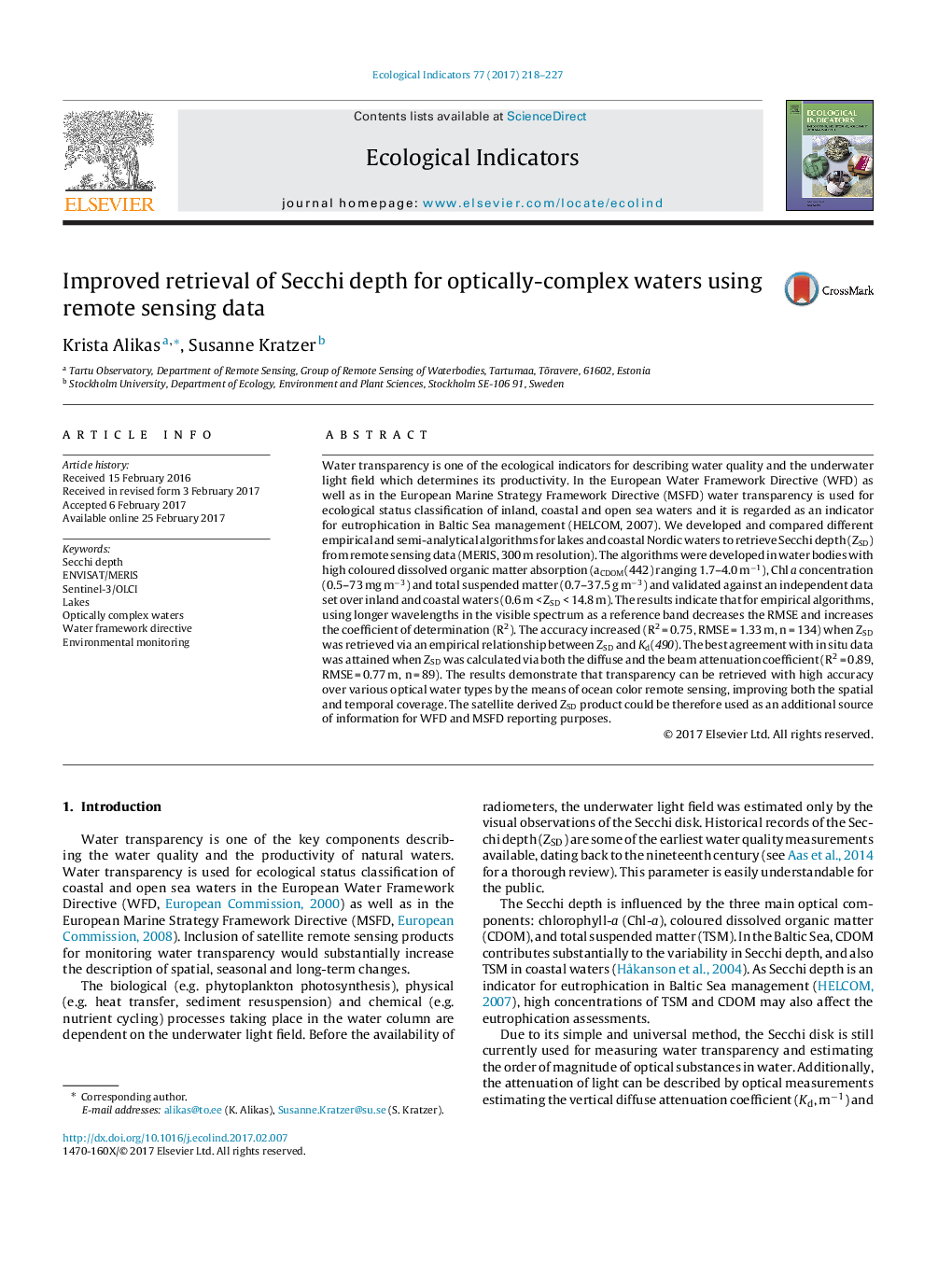| کد مقاله | کد نشریه | سال انتشار | مقاله انگلیسی | نسخه تمام متن |
|---|---|---|---|---|
| 5741725 | 1617125 | 2017 | 10 صفحه PDF | دانلود رایگان |

Water transparency is one of the ecological indicators for describing water quality and the underwater light field which determines its productivity. In the European Water Framework Directive (WFD) as well as in the European Marine Strategy Framework Directive (MSFD) water transparency is used for ecological status classification of inland, coastal and open sea waters and it is regarded as an indicator for eutrophication in Baltic Sea management (HELCOM, 2007). We developed and compared different empirical and semi-analytical algorithms for lakes and coastal Nordic waters to retrieve Secchi depth (ZSD) from remote sensing data (MERIS, 300 m resolution). The algorithms were developed in water bodies with high coloured dissolved organic matter absorption (aCDOM(442) ranging 1.7-4.0 mâ1), Chl a concentration (0.5-73 mg mâ3) and total suspended matter (0.7-37.5 g mâ3) and validated against an independent data set over inland and coastal waters (0.6 m < ZSD < 14.8 m). The results indicate that for empirical algorithms, using longer wavelengths in the visible spectrum as a reference band decreases the RMSE and increases the coefficient of determination (R2). The accuracy increased (R2 = 0.75, RMSE = 1.33 m, n = 134) when ZSD was retrieved via an empirical relationship between ZSD and Kd(490). The best agreement with in situ data was attained when ZSD was calculated via both the diffuse and the beam attenuation coefficient (R2 = 0.89, RMSE = 0.77 m, n = 89). The results demonstrate that transparency can be retrieved with high accuracy over various optical water types by the means of ocean color remote sensing, improving both the spatial and temporal coverage. The satellite derived ZSD product could be therefore used as an additional source of information for WFD and MSFD reporting purposes.
Journal: Ecological Indicators - Volume 77, June 2017, Pages 218-227